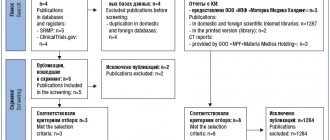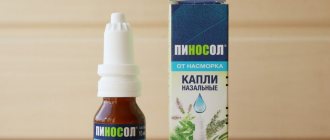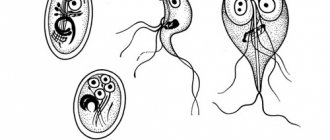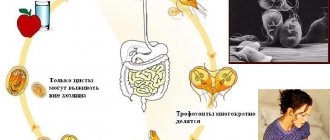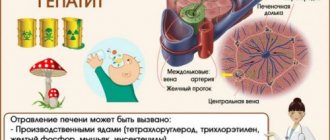How to prepare a suspension
The medicine bottle contains powder, from which you need to prepare a homogeneous mixture:
- To do this, boiled water cooled to room temperature is added to the mark on the bottle or the dosage indicated in the instructions is added from the included measuring syringe.
- First, you should introduce only half the volume of liquid (only water, no juice, milk, or other drink) and shake the contents of the bottle thoroughly.
- After this, add the rest and shake again.
- Usually the appointment lasts several days.
- The prepared suspension is usually stored at room temperature and shaken before use.
- The required amount of the mixture is measured using the spoon or syringe supplied with the package.
Antibiotics in suspension for children are the mildest dosage form with a reduced and safe content of the active antibacterial substance.
What foods are best not to combine with antibiotics?
Competent approach to prescribing medications
In any case, the doctor must follow two basic principles of antibacterial therapy:
- Rapid prescription of the most effective drugs in cases where their effect has been proven.
- Maximum reduction in the use of antibacterial drugs in all other cases.
Unfortunately, there are no reliable external signs or simple and cheap laboratory methods to distinguish between the viral and bacterial nature of respiratory tract infections. At the same time, it is known that acute rhinitis (runny nose) and acute bronchitis (inflammation of the bronchial mucosa) are almost always caused by viruses, and tonsillitis (inflammation of the tonsils and pharynx), acute otitis (inflammation of the ear) and sinusitis (inflammation of the mucous membrane of the paranasal sinuses) ) in a significant part of cases - bacteria.
It is natural to assume that approaches to antibacterial therapy for individual acute upper respiratory tract infections should be somewhat different.
Pneumonia
Photo: macniak / freepik.com
If pneumonia is diagnosed or there is serious suspicion of this pathology, the tactics of antibacterial therapy differ from the two previous cases.
Certain age groups of children are characterized by certain features of the predominant pathogens. Thus, under the age of 5-6 years, according to some researchers, up to 50% of cases of pneumonia can be caused by viruses. At an older age, the likelihood of the viral nature of pneumonia decreases significantly and the role of bacteria (pneumococci) in the development of pneumonia increases. However, in all age groups, pneumococcus is a common causative agent of this disease, which causes a severe course of the disease. That is why pneumonia is an absolute indication for antibiotic therapy .
For a cold
What we call a cold (runny nose, clear snot, cough without phlegm, sore throat, hoarseness) does not require antibiotics even if there is a fever. The question about them will be raised if signs of bacterial infection appear (green snot, yellow sputum, temperature 38 or higher for more than three days).
Sometimes a child is affected by such formidable bacteria as meningococcus, when immediately after a short period of inflammation of the nasopharynx, against the background of fever, signs of damage to the nervous system and a rash appear in the form of many small bruises on the legs and buttocks. This requires an urgent call to the ambulance and the administration of antibiotics at the stage of examining the child by the team. Delay in this case could cost the child his life.
For the purpose of prevention, antibiotics should not be given to a child. They do not have a point of application until the bacteria are activated.
Principles of prescribing antibiotics
Antibacterial drugs should only be used for infections caused by bacteria.
In a hospital for severe and life-threatening infectious diseases (for example, meningitis - inflammation of the membranes of the brain, pneumonia - pneumonia, etc.), responsibility for the correct choice of medicine lies entirely with the doctor, who is based on observation data of the patient (clinical picture) and the results special research. Photo: ipopba / freepik.com
For mild infections occurring in “home” (outpatient) conditions, the situation is fundamentally different. The doctor examines the child and prescribes medications, and sometimes this is accompanied by explanations and answers to questions, sometimes not. Often, parents themselves ask the doctor to prescribe an antibiotic. In such situations, it is sometimes psychologically easier for a pediatrician to write a prescription than to risk his reputation and waste time explaining the inappropriateness of such a prescription.
Sources
- Anci E., Braun C., Marinosci A., Rodieux F., Midun E., Torres MJ., Caubet JC. Viral Infections and Cutaneous Drug-Related Eruptions. // Front Pharmacol - 2021 - Vol11 - NNULL - p.586407; PMID:33776753
- Lassi ZS., Padhani ZA., Das JK., Salam RA., Bhutta ZA. Antibiotic therapy versus no antibiotic therapy for children aged 2 to 59 months with WHO-defined non-severe pneumonia and wheeze. // Cochrane Database Syst Rev - 2021 - Vol1 - NNULL - p.CD009576; PMID:33469915
- Marusinec R., Kurowski KM., Amato HK., Saraiva-Garcia C., Loayza F., Salinas L., Trueba G., Graham JP. Caretaker knowledge, attitudes, and practices (KAP) and carriage of extended-spectrum beta-lactamase-producing E. coli (ESBL-EC) in children in Quito, Ecuador. // Antimicrob Resist Infect Control - 2021 - Vol10 - N1 - p.2; PMID:33407927
- Yousif MK. Mothers' false beliefs and myths associated with teething. // Qatar Med J - 2021 - Vol2020 - N2 - p.32; PMID:33329998
- Willems J., Hermans E., Schelstraete P., Depuydt P., De Cock P. Optimizing the Use of Antibiotic Agents in the Pediatric Intensive Care Unit: A Narrative Review. // Paediatr Drugs - 2021 - Vol23 - N1 - p.39-53; PMID:33174101
- Shahrin L., Chisti MJ., Shahid ASMSB., Rahman ASMMH., Islam MZ., Afroze F., Huq S., Ahmed T. Injectable Amoxicillin Versus Injectable Ampicillin Plus Gentamicin in the Treatment of Severe Pneumonia in Children Aged 2 to 59 Months: Protocol for an Open-Label Randomized Controlled Trial. // JMIR Res Protoc - 2021 - Vol9 - N11 - p.e17735; PMID:33136058
- De Wolf D., Genouw A., Standaert C., Victor A., Vanoverbeke N., De Groote K., Martens L. Endocarditis prophylaxis in daily practice of pediatricians and dentists in Flanders. // Eur J Pediatr - 2021 - Vol180 - N2 - p.397-405; PMID:32780192
- de Sá Almeida JS., de Oliveira Marre AT., Teixeira FL., Boente RF., Domingues RMCP., de Paula GR., Lobo LA. Lactoferrin and lactoferricin B reduce adhesion and biofilm formation in the intestinal symbionts Bacteroides fragilis and Bacteroides thetaiotaomicron. // Anaerobe - 2021 - Vol64 - NNULL - p.102232; PMID:32634470
- Basha GW., Woya AA., Tekile AK. Prevalence and risk factors of active trachoma among primary school children of Amhara Region, Northwest Ethiopia. // Indian J Ophthalmol - 2021 - Vol68 - N5 - p.750-754; PMID:32317440
